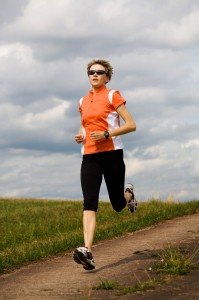
Perhaps, like many people, you tend to overdose on cookies and pie during the winter holidays. Or maybe last semester’s study breaks and late-night runs to Durfee’s are beginning to catch up with you, and you find yourself facing the dreaded “freshman fifteen,” even if you are not a freshman. Either way, you may have been tempted at one time or another to use specialized exercise machines supposedly designed to deliver six-pack abs or buns of steel. But can selectively targeting certain body parts truly result in localized fat loss? Infomercials and even some fitness magazines would certainly like you to believe so. Scientific studies, however, suggest otherwise.
Targeted fat loss, also known as “spot reduction,” is a popular idea partly because it appeals to our intuition. After all, it seems perfectly reasonable to assume that the fat you burn while exercising comes from the area around the muscles you are using. Yet a 1971 study conducted by the University of California, Irvine on tennis players found that this is not actually the case. Tennis players constitute a population whose right and left arms have been consistently subjected to very different amounts of exercise over several years. Consequently, if spot reduction were a valid concept, one would expect the players’ dominant arms to have thinner layers of subcutaneous fat compared to their non-dominant arms. When the researchers measured the thickness of subcutaneous fat at specific points along the players’ arms, however, they found no statistically significant difference between right and left arms.
More recently, in a 2007 study led by the University of Connecticut, 104 participants completed a twelve-week supervised resistance-training program in which their non-dominant arm was selectively exercised. MRI assessments of subcutaneous fat before and after the program revealed that fat loss tended to be generalized, rather than only occurring in the trained arm.
It turns out that there are a few basic physiological reasons why targeted fat loss does not work. The fat contained in fat cells exists in a form known as triglycerides. Muscle cells, however, cannot directly use triglycerides as fuel; it would be analogous to trying to run a car on crude oil. Instead, the fat must be broken down into glycerol and free fatty acids, which then enter the bloodstream. As a result, the fat broken down to be used as fuel during prolonged exercise can come from anywhere in your body, not just the part that is being worked the most.
Another reason is that many of the exercises commonly associated with spot reduction do not actually burn many calories – and if you are not burning enough calories, you are not going to lose much fat from anywhere in your body. (Keep in mind that one pound of fat is equivalent to 3500 calories.) In fact, you are more likely to shed your love handles by taking up a running program than by doing crunches and sit-ups every day, simply because cardiovascular exercise is a much more efficient calorie-burner. High-intensity interval training (alternating between brief periods of high-intensity and low-intensity exercise) can be particularly effective, due to the phenomenon of after-burn – that is, an increase in resting metabolic rate that occurs for up to 24 hours post-exercise. Weight training can also help to achieve optimal results. It is important to maintain your muscle mass because you will not achieve a toned look if you lose lean tissue along with fat. Finally, good nutrition is essential. After all, even if you burn 500 calories by exercising, you will not end up losing any fat if you also consume 500 more calories than usual.
Ultimately, fat loss comes down not to targeted exercises, but to the basic principle of how many calories you expend versus how many you take in. Doing 100 crunches a day can effectively strengthen your abdominal muscles, but it probably will not make them any more visible unless you also take other steps to reduce your overall body fat. If you combine cardiovascular exercise with weight training and sensible nutrition, however, those fat cells will not stand a chance.
